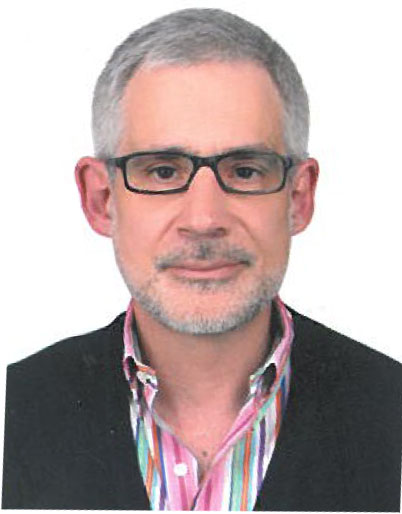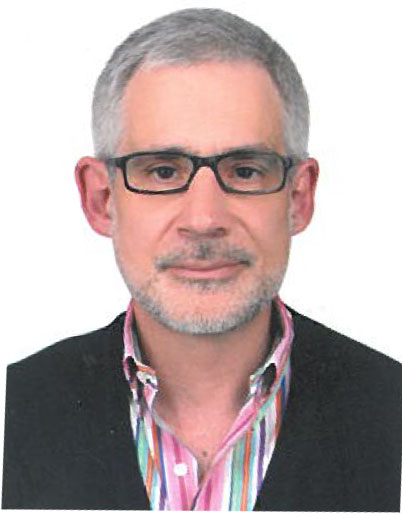Day 3 :
Keynote Forum
Walter Bini
Healthpoint Hospital, UAE
Keynote: Lumbar spinal canal stenosis: Surgical management strategies, quo vadis (where to)
Time : 10:00-10:40

Biography:
Walter Bini has completed his Diploma at Westminster School, Simsbury Conn. USA and Post-graduate degree at Universidad de Zaragoza, Facultad de Medicina, Zaragoza-Spain. In 2014, he was the Middle East Chairman of ISLASS. He was Head of Neurosurgery at Sheikh Khalifa General Hospital, UAQ-UAE from 2014-2016. Currently, he is Consultant Neurosurgeon in Orthopedic department, spine section of Lanzo Hospital COF, Lanzo d’Intelvi in Italy and also Visiting Consultant Neurosurgeon in Orthopedic department at Healthpoint Hospital, UAE.
Abstract:
Lumbar spinal stenosis (LSS) is characterized by a narrowing of the lumbar spinal canal and/or the intervertebral foramina resulting from disc degeneration, bulging of the annulus, facet joint hypertrophy and infolding of the ligamentum flavum. With increase of the aging population and advances in diagnostic imaging capabilities, lumbar spinal stenosis in its different stages or types is becoming more frequently diagnosed with an estimated prevalence of up to 13%. This along with newer technical advances being introduced in the surgical management of LSS continues to pose a topic of discussion among neurologists as well as orthopedic and neurosurgeons as far as treatment strategies are concerned.
Especially the cases of moderate or soft stenosis, very different than the bony or consolidated type, warrant a detailed analysis of the primary interspinous devices used for both types along with a proposal for a decision making protocol. Based on our experience with the management of these two entities, we will focus on our results and future considerations with less invasive procedures which are proving over the last two decades to be a viable alternative for stenosis patients. Core of our presentation are our results with a minimal invasive procedure performed in 121 patients and their corresponding initial follow-up over one year with a 92% success rate evaluated by an independent observer. This is clearly in contrast with the 40-90% success rates and 14-35% complication rates reported and associated with standard decompression surgeries. Furthermore, we will present our considerations of a further novel technique and the direction treatment options are developing towards the corresponding scheduled clinical-trial.
Keynote Forum
Walter Bini
Healthpoint Hospital, UAE
Keynote: Lumbar spinal canal stenosis: Surgical management strategies, quo vadis (where to)
Time : 10:00-10:40

Biography:
Walter Bini has completed his Diploma at Westminster School, Simsbury Conn. USA and Post-graduate degree at Universidad de Zaragoza, Facultad de Medicina, Zaragoza-Spain. In 2014, he was the Middle East Chairman of ISLASS. He was Head of Neurosurgery at Sheikh Khalifa General Hospital, UAQ-UAE from 2014-2016. Currently, he is Consultant Neurosurgeon in Orthopedic department, spine section of Lanzo Hospital COF, Lanzo d’Intelvi in Italy and also Visiting Consultant Neurosurgeon in Orthopedic department at Healthpoint Hospital, UAE.
Abstract:
Lumbar spinal stenosis (LSS) is characterized by a narrowing of the lumbar spinal canal and/or the intervertebral foramina resulting from disc degeneration, bulging of the annulus, facet joint hypertrophy and infolding of the ligamentum flavum. With increase of the aging population and advances in diagnostic imaging capabilities, lumbar spinal stenosis in its different stages or types is becoming more frequently diagnosed with an estimated prevalence of up to 13%. This along with newer technical advances being introduced in the surgical management of LSS continues to pose a topic of discussion among neurologists as well as orthopedic and neurosurgeons as far as treatment strategies are concerned.
Especially the cases of moderate or soft stenosis, very different than the bony or consolidated type, warrant a detailed analysis of the primary interspinous devices used for both types along with a proposal for a decision making protocol. Based on our experience with the management of these two entities, we will focus on our results and future considerations with less invasive procedures which are proving over the last two decades to be a viable alternative for stenosis patients. Core of our presentation are our results with a minimal invasive procedure performed in 121 patients and their corresponding initial follow-up over one year with a 92% success rate evaluated by an independent observer. This is clearly in contrast with the 40-90% success rates and 14-35% complication rates reported and associated with standard decompression surgeries. Furthermore, we will present our considerations of a further novel technique and the direction treatment options are developing towards the corresponding scheduled clinical-trial.
Keynote Forum
Walter Bini
Healthpoint Hospital, UAE
Keynote: Lumbar spinal canal stenosis: Surgical management strategies, quo vadis (where to)
Time : 10:00-10:40

Biography:
Walter Bini has completed his Diploma at Westminster School, Simsbury Conn. USA and Post-graduate degree at Universidad de Zaragoza, Facultad de Medicina, Zaragoza-Spain. In 2014, he was the Middle East Chairman of ISLASS. He was Head of Neurosurgery at Sheikh Khalifa General Hospital, UAQ-UAE from 2014-2016. Currently, he is Consultant Neurosurgeon in Orthopedic department, spine section of Lanzo Hospital COF, Lanzo d’Intelvi in Italy and also Visiting Consultant Neurosurgeon in Orthopedic department at Healthpoint Hospital, UAE.
Abstract:
Lumbar spinal stenosis (LSS) is characterized by a narrowing of the lumbar spinal canal and/or the intervertebral foramina resulting from disc degeneration, bulging of the annulus, facet joint hypertrophy and infolding of the ligamentum flavum. With increase of the aging population and advances in diagnostic imaging capabilities, lumbar spinal stenosis in its different stages or types is becoming more frequently diagnosed with an estimated prevalence of up to 13%. This along with newer technical advances being introduced in the surgical management of LSS continues to pose a topic of discussion among neurologists as well as orthopedic and neurosurgeons as far as treatment strategies are concerned.
Especially the cases of moderate or soft stenosis, very different than the bony or consolidated type, warrant a detailed analysis of the primary interspinous devices used for both types along with a proposal for a decision making protocol. Based on our experience with the management of these two entities, we will focus on our results and future considerations with less invasive procedures which are proving over the last two decades to be a viable alternative for stenosis patients. Core of our presentation are our results with a minimal invasive procedure performed in 121 patients and their corresponding initial follow-up over one year with a 92% success rate evaluated by an independent observer. This is clearly in contrast with the 40-90% success rates and 14-35% complication rates reported and associated with standard decompression surgeries. Furthermore, we will present our considerations of a further novel technique and the direction treatment options are developing towards the corresponding scheduled clinical-trial.
Keynote Forum
Hugues Duffau
Gui de Chauliac Hospital, France
Keynote: Surgery of insular and paralimbic diffuse low-grade gliomas: Technical considerations
Time : 10:40-11:20

Biography:
Hugues Duffau is a Professor and Chairman of Neurosurgery department at Montpellier University Medical Center and Head of the INSERM 1051 Team "Plasticity of the central nervous system, human stem cells and glial tumors" at Institute for Neurosciences of Montpellier (France). He is an expert in the awake cognitive neurosurgery of slow-growing brain tumors, as low-grade gliomas, a routine which he has developed since 20 years. His fundamental approach is centered on the concepts of the brain connectomics and neuroplasticity, breaking with the traditional localizationist view of cerebral processing. He has written four textbooks and over 335 publications in international journals ranging from neurosurgery to fundamental neurosciences, including cognitive sciences and brain plasticity for a total of more than 20,500 citations and with an h-index of 77. He is member of editorial boards of many journals and Reviewer for around 100 journals including: New England Journal of Medicine, Lancet Oncology, Nature Medicine, Nature Reviews Neuroscience, Nature Reviews Neurology, Annals of Neurology, Brain, Cerebral Cortex, Trends in Cognitive
Abstract:
Aim: Once considered a ‘‘no man’s land’’ especially when invaded by a diffuse low grade glioma (DLGG), the insula/paralimbic system remains today a surgical challenge. Surgery for insular/paralimbic DLGG involves consideration of its hidden location under the potentially eloquent operculae, the proximity to vascular tree and high density of functions not only in the insular cortex but also in the white fiber pathways passing under the insular lobe. Here, a personal consecutive series of 150 patients who underwent an insular/paralimbic DLGG revealed by seizures, with long-term follow-up, is detailed. Based upon functional and oncological results, advances and limitations of this challenging surgery are discussed.
Methods: The preoperative examination was normal in 88% of patients. All surgeries were performed under cortico-subcortical stimulation, in 134 patients while awake. A transopercular approach was favored, even in pure insular DLGG. Despite an immediate postoperative worsening in 59% of cases, all patients but two (98%) returned to baseline or better. On control MRI, 80% of resections were total or subtotal. 15 patients underwent a second or third surgery, with no additional deficit. 82% of patients are still alive with a mean follow-up of seven years.
Conclusions: This is the largest series ever reported with insular/paralimbic DLGG surgery. The better knowledge of the functional anatomy and the connectivity of the insula as well as the use of intraoperative direct stimulation mapping enabled to minimize the risk of permanent deficit (and even to improve the quality of life) while increasing the extent of resection; thus, the impact on the natural history. Therefore, surgical removal has to be considered systematically for insular/paralimbic DLGG. However, this surgery remains challenging, especially within the anterior perforating substance and the posterior part of the (dominant) insula. Repeated operations can be suggested when the first resection was not complete.
